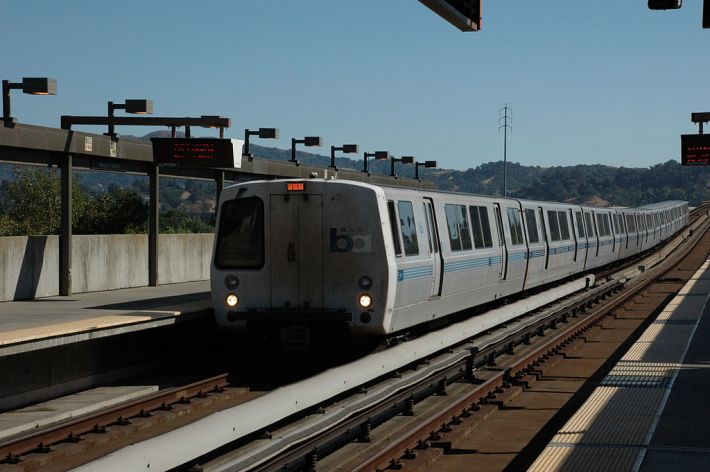When BART was built in the late 1960s, it was the most advanced subway system in the world. But what was once state of the art technology is now almost obsolete and unable to cope with the ever increasing demands made on the system by booming ridership.
BART trains still run on a 1967 computer system which causes 25 percent of BART’s major delays and limits how many trains BART can run per hour. The basic infrastructure of BART’s electrical system has remained unchanged since it was first installed in the late 1960s, and the failure of which has caused the recent shutdown of Pittsburg-Bay Point station. Many of BART's escalators date back to the start of the system, and can no longer handle crush loads, inclement weather, or even heavy regular usage.
BART’s decaying infrastructure is the result of decades of underinvestment and a culture that had focused on costly and imprudent exurban expansion over maintenance of the core system. But over the past few years, a new generation of leadership has come to power at BART. This leadership was elected by Bay Area voters with a mandate to fix the existing infrastructure first, before spending money on glitzy new extensions.
As a result of this new leadership, over the past 10 years BART has transformed how it maintains its train fleet, nearly doubling the number of miles each train car can travel before it experiences a breakdown. Last year, BART even led the country in the proportion of its train fleet that was operational and ready to ride on the average weekday morning.
Not only is BART doing maintenance better than before, it’s also doing it more cost-effectively. BART now has both the lowest operating cost per passenger mile and the lowest proportion of its operating cost paid for by government subsidy of any major US transit system.
Despite these improvements, no one at BART is satisfied with the current state of its infrastructure or its service. Many of us wish different decisions had been made in the 1990s and 2000s . But now is not the time to point fingers at the mistakes made by previous generations, but to throw ourselves into tackling the problems they have left us to secure BART for future generations.
Which is why, this November, BART plans to ask the voters to double down on their commitment to rebuilding the core BART system with a $3.5 billion safety and reliability bond measure. This will be the first time BART has asked the voters to fund a major reinvestment program in its core system since BART opened all those decades ago.
The bond proceeds will be spent rebuilding and upgrading BART's old and obsolete core systems (train control, electrical, escalators, track and tunnels) with modern technology. These investments are needed to ensure safe and reliable service for BART’s 450,000 daily riders. The bond measure is free of costly and imprudent projects that will stretch the system outwards, because our highest priority has to be getting our existing system into shape.
Rebuilding BART’s core systems with modern technology won’t just help existing BART riders. It will also allow BART to significantly increase capacity, to the tune of almost 200,000 daily riders, by running more trains faster and closer together. To put that in context, that's 3x Caltrain's daily ridership and larger than the daily ridership of Muni Metro in San Francisco or AC Transit in the East Bay. Indeed, this bond investment plan would represent the single largest increase in public transit capacity in the history of the Bay Area.
As importantly, these investments also make sense for those who rarely or never ride BART such as car commuters or bus riders. A BART that doesn’t function or doesn’t keep up with the Bay Area’s growth will only funnel more cars onto already overly congested streets and highways. Indeed, studies have shown that, in the absence of BART, commute times along some of the Bay Area’s busiest highways would triple from already long waits.
Today, BART stands at the edge of a precipice. BART riders and the Bay Area as a whole cannot afford another decade relying on its aging and inefficient systems built in the 1960s. Without meaningful investment now, ever slower and less reliable transportation will hold back the development of our region and the ability for each Bay Resident to thrive. The time has come to rebuild BART from the ground up.
Nick Josefowitz represents District 8, which includes portions of San Francisco, on the BART Board of Directors.
A version of this editorial appeared in the San Francisco Examiner.






